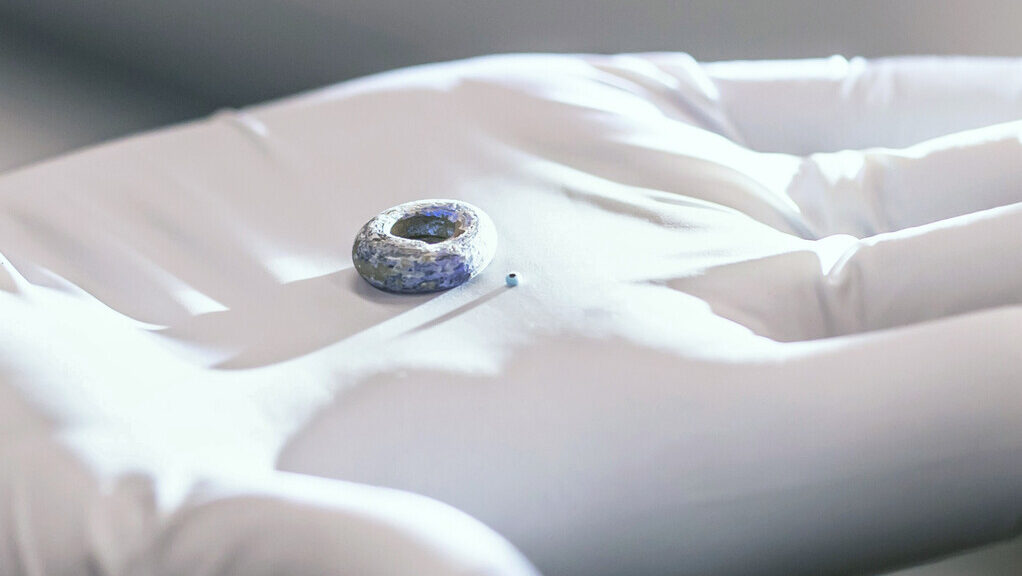Beads show that European trade in the African interior used Indigenous routes
Tiny glass beads discovered in mountain caves about 25 miles from the shores of Lake Malawi in eastern-central Africa provide evidence that European trade in the continent’s hinterland was built on Indigenous trade routes from the coast to the interior that had existed for centuries, according to a study co-authored by Yale anthropologist Jessica Thompson.

The beads also are artefacts from a period in the 19th century when heightened European political and economic interest in the region influenced trade between Indian Ocean merchants and communities in the African interior, Thompson said.
The study, published in the journal African Archaeological Review, is based on a collection of 29 glass beads excavated at three sites in the Kasitu Valley in northern Malawi, more than 400 miles from the eastern coast, from 2016 to 2019.
An analysis of the beads’ elemental composition showed that all but one of them were manufactured in Europe using glass recipes that were in fashion around the mid-19th century. The exception had a composition typical of glass beads produced in South Asia from the 15th to the 17th century.
The beads’ provenance indicates that people in the region were either directly or indirectly trading with Europeans before the latter group had established a presence in what is now Malawi during the second half of the 19th century.
This commerce was most likely associated with heightened trade in commodities such as gum copal — a resin used in the varnish industry — and ivory that was prized in Europe and North America.
It also likely involved the capture and transport of enslaved people, who were taken in chains to spice plantations in Zanzibar and other Indian Ocean islands, Thompson said.
“It’s a dark story,” said Thompson, assistant professor of anthropology in Yale’s Faculty of Arts and Sciences and the paper’s senior author. “Indian Ocean traders had access to European goods, like these little beads, that they could exchange for things in high demand in distant places — a story of exploitation deep into Africa that continues today. And in the mid-1800s, there was still a slave trade across eastern Africa that would persist for several more decades.”
Thompson is a paleoanthropologist whose research typically concerns much older human groups. But as she was working with colleagues at sites in Malawi searching for Stone Age artefacts, glass beads began showing up in their 1-millimetre sieves. (All but one of the beads have a diameter of less than 5 millimetres. The smallest were less than 2 millimetres in diameter.)
“Some were so tiny that we didn’t know that we were looking at beads when we first found them,” she said. “They just look like little brightly coloured specks.”
Thompson and her other co-authors teamed with Laure Dussubieux, a senior research scientist at the Field Museum in Chicago, who analyzed the beads’ composition using a technique called laser ablation inductively coupled plasma mass spectrometry. Essentially, the beads were zapped with a high-energy laser to determine their elemental makeup without damaging them, Thompson said.
It was the first time this technique was applied to glass beads excavated in Malawi, where thousands of glass beads have been discovered at dozens of sites since 1966.
The researchers used the beads’ chemical compositions to identify their origins. For example, five red-on-white beads in the study contained high concentrations of arsenic, which was used in European recipes during the 19th century to make glass opaque. These beads likely were produced in Venice, which was the centre of 19th-century Europe’s bead-making industry, according to the study. They were manufactured around the time the Scottish missionary David Livingstone was creating maps of the African interior and encouraging people in Britain to take a greater interest in eastern-central Africa. (The British eventually established governance in Malawi, which became an independent country in 1964).
A single bead yielded from one of the sites was the only example in the collection with a non-European origin. Its composition is consistent with beads produced in Chaul, a former town on the Maharashtra coast of India, from the 15th to the 17th century, meaning it likely arrived in the eastern African interior hundreds of years before the European beads, the researchers concluded.
Two cowrie shells, which were abundant in the Indian Ocean and used as currency and jewellery, were discovered at a fourth site that bore no glass beads. Radiocarbon dating determined that the shells were between 1341 and 1150 years old, which suggests that the glass beads of European and Indian origin arrived at inland communities via long-established trade networks, Thompson said.
“This tells you that people were already trading through very complex routes from the Indian Ocean, over mountains and around lakes to inland communities at least 1,000 years before Europeans began documenting their experiences in the region,” she said. “Newcomers to Africa were exploiting trade routes created through long-term Indigenous interactions.”
“It’s not simply a story of Europeans arriving and distributing their goods to people in the African interior,” she added. “The people living there had been trading for centuries for Indian Ocean goods, via established and productive pathways. Our work shows how archaeology and artefacts can reveal important information that would stay hidden if you only relied on written accounts.”
Menno Welling of Amsterdam University of the Arts and Potiphar Kaliba of Malawi’s Department of Museums and Monuments are co-authors of the study.
